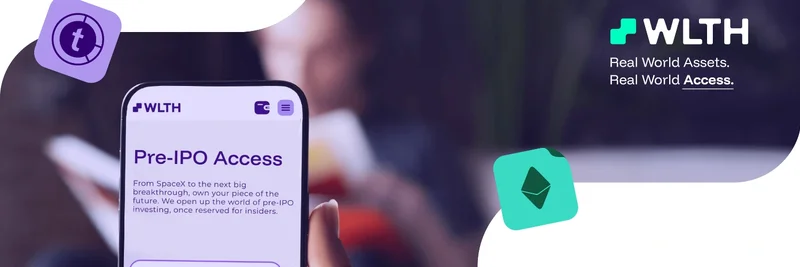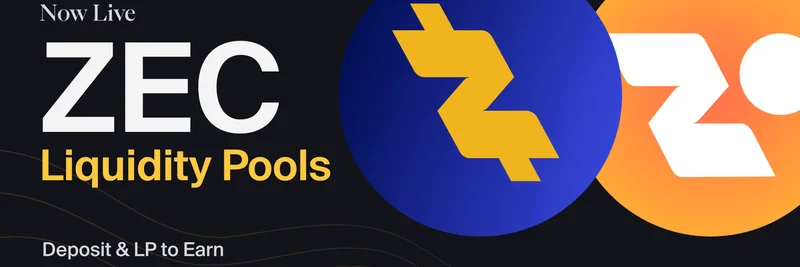Common Wealth is building a community-powered investing platform that aims to open up early‑stage Web3 deal flow to everyone, not just traditional venture capitalists. Its native token, WLTH (ERC‑20 on the Base network at 0x99b2b1a2adb02b38222adcd057783d7e5d1fcc7d), sits at the heart of this model, unlocking access, lowering fees, and aligning incentives across the ecosystem.
Quick project snapshot
- What it is: A platform that uses Web3 rails to democratize venture-style investing and align community incentives.
- Launch timeline: Platform launched February 8, 2024; WLTH entered circulation May 24, 2024.
- Multi-chain setup: Genesis NFTs on Ethereum, core app/protocol on zkSync Era, and WLTH as an ERC‑20 token on Base.
- Security: Smart contracts audited by Hacken in January and March 2024.
If you’re new to some of these terms:
- ERC‑20: A common token standard on Ethereum that makes tokens easy to transfer and integrate.
- Layer 2 (L2): A network built on top of Ethereum that makes transactions cheaper and faster while inheriting Ethereum’s security. Base is an L2 by Coinbase.
- IDO: Initial DEX Offering, a token launch via decentralized exchanges.
WLTH token basics and tokenomics
- Symbol: WLTH
- Network: Base (an Ethereum Layer 2 solution)
- Contract: 0x99b2b1a2adb02b38222adcd057783d7e5d1fcc7d
- Max supply: 1,000,000,000 WLTH
- Circulating supply: ~880,705,229 WLTH (as of September 30, 2025)
- Ownership renounced: The token’s ownership was renounced before the IDO, meaning no central issuer can change core permissions on the token contract.
A 1% royalty fee applies to WLTH transfers. These fees flow into the WLTH Fund (formerly the Community Fund), alongside proceeds from platform NFT secondary sales. This creates an ongoing pool to support initiatives approved by the community.
What WLTH lets you do
- Reduced platform fees: Stake WLTH to receive sizable discounts—up to 90%—on platform carry fees.
- Governance rights: WLTH holders vote on fund allocations and platform decisions. The top 50 WLTH stakers can propose investment opportunities to the community.
- Fund deployment: WLTH helps direct capital into projects approved by tokenholder governance via the WLTH Fund.
- Rewards: Earn WLTH for learning modules, quests, and helping grow the ecosystem.
- Passive income: Stakers share in distributions from the Community Fund and protocol dividends.
- Liquidity of positions: The platform is designed so users can sell their investment stakes at any time, adding flexibility for participants.
Tech features under the hood
- Base chain advantage: By building on Base, Common Wealth benefits from low fees and fast confirmations, while relying on Ethereum’s security.
- Dynamic NFTs: Certain NFTs can evolve based on user activity or market conditions, making them more interactive than static collectibles.
- DePIN integration: Incorporates Decentralized Physical Infrastructure Networks, extending decentralization beyond purely digital components.
- Circular protocol: Value generated within the ecosystem is designed to flow back into the protocol and be redistributed to the community, creating a self-sustaining flywheel.
If you’re new to NFTs: They’re unique digital assets that can represent membership, access, or rights; “dynamic” means their attributes or visuals can change based on rules or activity.
Team, partners, and community
- Team leads:
- Dillon Chen: Blockchain and technical architecture
- Drew Stone: Strategic partnerships and scaling
- Raymond Zhong: Investment process integrity and security
- Strategic partners: Hashkey, Cypher Capital, Master Ventures
- Community governance: Staking and voting give WLTH holders a direct say in fund decisions and platform direction.
How to research and trade WLTH
WLTH is available on a mix of centralized and decentralized platforms. Always verify the contract on Base before trading: 0x99b2b1a2adb02b38222adcd057783d7e5d1fcc7d.
Recommended platforms and resources:
- Research and trade: gmgn.ai WLTH page
- Centralized exchanges: KuCoin, Gate.io, MEXC
- On-chain data (BaseScan): basescan.org/token/0x99b2b1a2adb02b38222adcd057783d7e5d1fcc7d
Why include gmgn.ai in your toolkit?
- It focuses on meme and long‑tail tokens across chains like Base, giving you fast price feeds and real-time analytics.
- Smart money tracking helps you follow notable wallets and discover flows you might otherwise miss.
- Built‑in safety checks can flag risks like excessive taxes or honeypot behavior.
- For advanced users, it supports automated strategies and cross‑chain execution.
Tip: No matter where you trade, confirm the token address and chain, check liquidity depth, and review recent on-chain activity before executing orders.
Official links
- Website: joincommonwealth.xyz
- Whitepaper: joincommonwealth.xyz/whitepaper
- Medium overview: $WLTH: The Key to All Street - Common Wealth
- Socials: Twitter (X), Discord, Telegram
How WLTH stands out on Base
- Utility beyond speculation: WLTH ties directly to platform access, governance, and fee reductions—concrete utility many tokens lack.
- Governance with skin in the game: Letting the top WLTH stakers propose investments increases alignment and filters deal quality.
- Sustainable funding loop: The 1% royalty and NFT fee streams constantly replenish the WLTH Fund, supporting ongoing initiatives.
- Multichain pragmatism: NFTs on Ethereum, protocol on zkSync Era, and WLTH on Base is a practical way to balance liquidity, UX, and costs.
Risks and reminders
- Market risk: Crypto assets can be volatile. Only invest what you can afford to lose.
- Smart contract risk: Audits reduce but don’t eliminate risk. Always stay updated on contract changes and governance proposals.
- Execution risk: Liquidity varies by venue; slippage and fees can impact outcomes.
This article is for informational purposes only and not financial advice. Do your own research and consider consulting a licensed advisor before making investment decisions.


